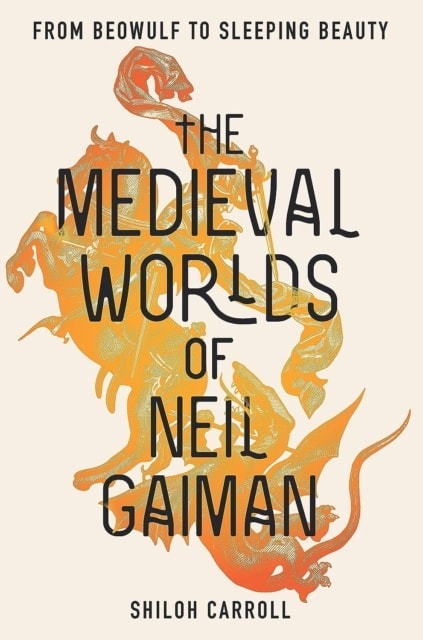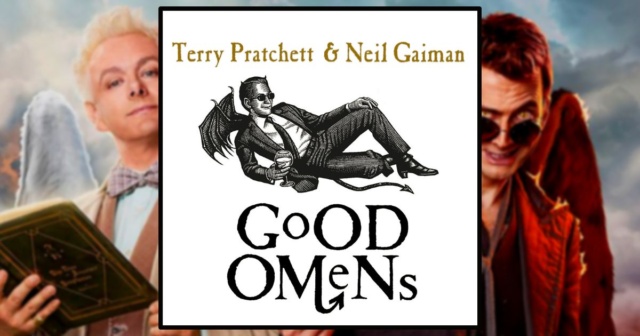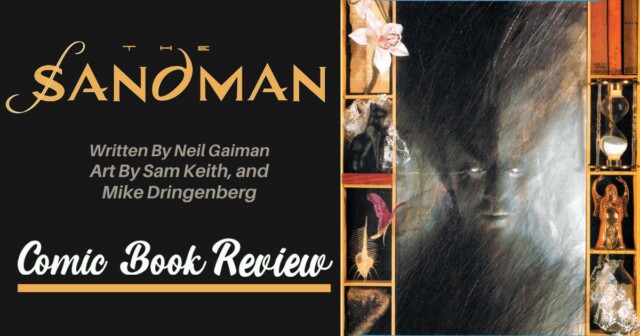Book Review: ‘The Medieval Worlds of Neil Gaiman: From Beowulf to Sleeping Beauty’ by Shiloh Carroll

After years of being considered trash writing for kids or those of lower intelligence, comics are finally starting to get the recognition they deserve as quality literature. But even as the general public has begun to accept them as a legitimate form of writing, there are those who look down on comics. But when academics start writing papers analyzing comics, you know that they’ve finally truly been accepted as true works of literature. And that’s just what Shiloh Carroll does in The Medieval Worlds of Neil Gaiman: From Beowulf to Sleeping Beauty.
[Note: While I am reviewing this novel independently and honestly, it should be noted that it has been provided to me by the University of Iowa Press for the purpose of this review.Warning: My review of The Medieval Worlds of Neil Gaiman: From Beowulf to Sleeping Beauty contains some spoilers!]
What is “medievalism” and how does it apply to Neil Gaiman?
When I first picked up this book I thought that it would be a guide to the worlds that Neil Gaiman has created over his long career. I thought it would list places and characters and detail the connections between them all. But I was wrong. This was a dissertation on medievalism in Gaiman’s works.
Now what is “medievalism”? Carroll defines it as “any meaning assigned to medieval culture or texts after the Middle Ages”. So it’s not even what the Middle Ages actually were like. Historical accuracy isn’t actually important for the medievalism label. Instead, it’s how modern people interpret what we think we know about the Middle Ages. Carroll spends his whole text looking at how Gaiman uses a huge compost heap of cultural images, thoughts, and feelings, many of which are medievalist in nature, to create his different stories.
The Medieval Worlds of Neil Gaiman is not a traditional narrative
Carroll’s text is not a story. It doesn’t even follow a timeline of Gaiman’s works to help organize it. He presents each “world” separately and gives all his thoughts about how medievalism influenced a particular Gaiman work before moving on to the next work. So that gives a sense of organization to his presentation. But not a feeling of flow.
Now this isn’t a criticism exactly. Carroll isn’t trying to write a story or give a history, he is simply trying to connect medievalism and Gaiman’s work. And he does that well. His paper works perfectly as an academic paper, it’s just not what most readers will be expecting when they pick up this book.
What Carroll has to say about Gaiman’s inspirations and how it’s influenced by our thoughts about the Middle Ages is pretty interesting. Unfortunately, it probably doesn’t have a huge audience outside the academic world or the few truly nerdy Gaiman fans. Especially with the presentation being so dry. Again, this is not a criticism of Carroll’s work. The Medieval Worlds of Neil Gaiman: From Beowulf to Sleeping Beauty is really an academic work and as such it works perfectly. It’s just that the academic style doesn’t tend to have a strong appeal to the general public.

The Sandman and all of Neil Gaiman’s work
Carroll doesn’t just limit himself to one title from Gaiman’s rather extensive collective work. He starts with analyzing Sandman but when he finishes looking at the full Sandman collection he moves on to medievalism in other Neil Gaiman works. He spends a lot of time going over all the different fairy tales that Gaiman has adapted. Carroll talks about the many different influences evident in Gaiman’s work, but he always returns to medievalism. Carroll seems to especially like how Neil Gaiman takes medieval tropes and turns them on their heads. I agree that it’s fun to see a well-known tale or character archetype suddenly doing something completely unexpected.
Neil Gaiman is well-known for doing this and Carroll makes sure to dissect every instance of these literary acrobatics that he can find. It’s interesting at first, but after a while, it starts to wear thin, especially with the dry, academic voice that Carroll uses when discussing his points.
One thing that Carroll points out is the sheer scope of material that “medieval” covers. It’s a period of time spanning from roughly 500 CE to 1500 CE. That’s over 1,000 years of events and culture. And that’s just in Europe. After all, there was plenty happening all over the world, not just in Western Europe. Granted the rest of the world was a lot less backward during that time. The collapse of the Roman Empire hit hard in Western Europe but the rest of the world barely noticed. But I digress. So “medieval” covers a huge range of time for Gaiman to pull from. And he pulls from all of it.
Carroll spends a while talking about how Neil Gaiman used very different concepts to build his worlds depending on which story he’s writing. For instance, sometimes Gaiman leans heavily on Dante’s version of Hell. He even has Morpheus take a tour of Hell that’s very similar to Dante’s trip, complete with a more demonic Virgil. But in other instances, he borrows from Milton’s Paradise Lost.
Gaiman also uses other sources and sometimes he takes a little of this, a little of that, and mixes them all up for something that’s both familiar and completely new. Shiloh Carroll talks about how effectively Gaiman does this to save effort on world-building. By borrowing from widely known and accepted cultural touchstones, people already know what he’s envisioning and he can spend more of his writing energy on the story and characters. It was a very interesting theory from Carroll.
The Medieval Worlds of Neil Gaiman from different perspectives
After reading Carroll’s work I’ve come to the conclusion that I want to give it two ratings. From the pop culture perspective, The Medieval Worlds of Neil Gaiman is a flop. It’s too dry and not that many people are going to be interested in the topic.
But as an academic paper, it’s pretty good. It’s a fun and relevant topic that marries academia to pop culture. Shiloh Carroll gives the academic world a nice shot of relevance here, something that many people criticize academia for lacking. Carroll fills that void nicely. So as an academic paper, 8/10. But as a pop culture item, 5/10.
My Ratings: 8/10 AND 5/10
The Medieval Worlds of Neil Gaiman: From Beowulf to Sleeping Beauty by Shiloh Carroll will be available later this year. Are you interested in reading this book about Neil Gaiman’s works? Let us know on social media @mycosmiccircus or in The Cosmic Circus Discord.




